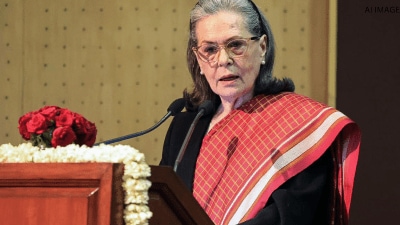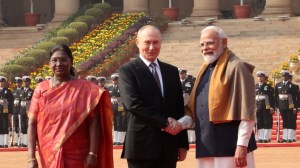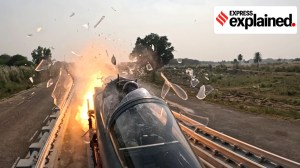Hear & now: Signs that will cheer the differently abled
In an initiative, which is expected to bring smiles across the face of lakhs of differently abled people in the country, two city-based youths have come up with a pilot project on Indian Sign Language on the mobile.

Two city-based youths come up with a mobile dictionary in Indian Sign Language
In an initiative, which is expected to bring smiles across the face of lakhs of differently abled people in the country, two city-based youths have come up with a pilot project on Indian Sign Language (ISL) on the mobile.
Vadodara-based Rajesh Ketkar (32), himself a 100 percent hearing-impaired, has come up with a self-explanatory dictionary for the likes of him.
Unlike a regular dictionary, the mobile-ISL (Indian Sign Language) dictionary enables people with hearing disabilities to have an image picture word with video-graphed sign language, all on the screen of a mobile.
Ketkar said, through this technology, they are attempting to enact the meaning of the words on camera, which will then be uploaded on their website. Those desirous of accessing this visual dictionary will have to log on to their website, which will be designed soon, and put the desired word in the search option. Once the search word is entered in the web page, it will be loaded with the video, which will explain the meaning of the word along with its picture. Ketkar said his attempt to digitalise Indian sign language with visual representation is the first of its kind across India.
Working on the new mobile dictionary for the hearing impaired for the last four months, Ketkar has created a set of 20 words as a pilot project. “A dictionary for the deaf doesn’t work the same way as a normal English dictionary because the deaf don’t understand words,” Ketkar wrote on a sheet of paper to communicate.
Ketkar said he could complete his education only up to Class X, which the government provides, after which he took up vocational training in tailoring. He said the idea to come out with a dictionary for the hearing-impaired germinated, when he along with Virbhadrasinh Rathod, attended a conference by the World Federation for Deaf in Madrid, Spain last year. The two run an NGO, Mook Badhir Mandal, in Vadodara, for the hearing impaired.
“There were deaf people from across the world and we were amazed to see their confidence level. In India people still look at the deaf with sympathy unlike in other countries. There they ask for ‘professional assistance’ and not ‘help.’ We were exposed to their technology which is not used anywhere in India or even in any other Asian country,” Ketkar said through an interpreter.
He added: “This is a pilot study that I have done because the Americans’ way of interpretation and understanding does not match ours. We don’t have much exposure to technology or education. The visual dictionary will help the deaf understand words on a daily basis which will also increase their vocabulary.”
With the success of his pilot study, Ketkar now plans to create a comprehensive dictionary with all the words.
“There is not much research and technological advancements happening in the country for the hearing impaired. But it has to start somewhere and I am trying to bring in that change,” Ketkar added.
- 01
- 02
- 03
- 04
- 05































